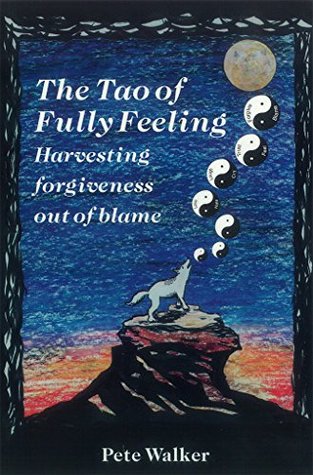More on this book
Community
Kindle Notes & Highlights
by
Pete Walker
Read between
October 18, 2020 - January 27, 2021
“The only pain that can be avoided is the pain that comes from trying to avoid unavoidable pain.”
Feelings and emotions are energetic states that do not magically dissipate when they are ignored. Much of our unnecessary emotional pain is the distressing pressure that comes from not releasing emotional energy. When we do not attend to our feelings, they accumulate inside us and create a mounting anxiety that we commonly dismiss as stress.
Stress is also the painful internal pressure of accumulated emotional energy. Grieving, explored at length herein, is the most effective stress-release mechanism that human beings have. Grieving is a safe, healthy release valve for our internal pressure cookers of emotion.
When we disburden ourselves of old unresolved traumas, energy wasted holding the past at bay becomes available for celebrating daily life.
Self-esteem cannot be reclaimed while perfectionism prevails. Self-esteem is in many ways the opposite of perfectionism.
Perfectionism also prevents us from letting in the love of others, no matter how abundant and genuine it is. When we are preoccupied with our deficiencies, we are often untouched by the nurturance others offer us. How tragic that so many of us are convinced we only deserve to be loved when we are happy or excelling.
Let us exchange self-rejection for the rejection of the perfectionism that was foisted on us when we were too young to ward it off. Nobody can be happy and at their peak all of the time. All good things come and go. Change is the only absolute in life
1994 PBS special, Human Quest, concluded that the key distinguishing characteristic between humans and computers was: “I feel, therefore I am,” and not “I think, therefore I am.”
We cannot recover emotionally if we do not resist those who try to bully us out of our ambivalence. We must refuse to pretend that we are absolutely consistent emotionally. Survivors who want to defend their healthy ambivalence can respond to make-up-your-mind assaults by replying that the matter in question is emotional and clearly not a matter of reason or choice.
Moodiness is a very slow and inefficient way of processing feelings. He who doesn’t cry may brood and wallow incessantly in despondency. She who can’t find a constructive release for her anger may live in bitterness prickled by an anger which can only smolder in prolonged bouts of hostile self-criticism. The most expeditious way to get past an unpleasant emotional experience is to embrace it and to fully feel and express it.
RISKS To laugh is – to risk appearing the fool. To weep is – to risk appearing sentimental. To reach out for another is – to risk involvement. To expose feelings is – to risk exposing your true self. To place your ideas, your dreams before the crowd is – to risk their loss. To love is – to risk not being loved in return. To live is – to risk dying. To hope is – to risk despair. To try is – to risk failure. But risks must be taken, because the greatest hazard in life is to risk nothing. The person who risks nothing, does nothing, has nothing and is nothing. He may avoid suffering and sorrow,
...more
Emotional flashbacks are nothing to be ashamed of. They are the psyche’s healthy attempts to vividly recreate the past so we can see it more accurately and resolve ongoing problems that stem from it.
Somatization is a process of the psyche that transforms accumulated emotional pain into physical symptoms and disease.
The peace that comes from a good cry is quite distinct from the peace that comes from relaxation techniques or meditation. It is the most grounded and somatic peace available. Effective grieving bestows “the peace that surpasses understanding” – the realization that there is nothing inside us from which we need to run.
Your task is not to seek for love, but merely to seek and find all of the barriers within yourself that you have built against it. – Course of Miracles
In fact, many of us remain in unhealthy relationships – relationships based on an illusion of love – because we don’t know what it feels like to be loved. Until we experience love emotionally at the heart level, we cannot discern whether our partners are really loving us or only paying lip service to love.
The most profound relief of crying, however, comes from letting the natural sounds of weeping come up from as deep a place in the body as possible. The Irish call this keening.
Andre Vachss confronts societal denial about verbal abuse: It is as painful as physical assault, with a pain that can last a lifetime. It leaves no visible marks, but it scars the heart and damages the soul.
Feeling contrasts with emoting which is the process of offering pain an active expression and release through crying, angering, or verbally ventilating.
The logical mind is as poor a solvent for feelings as oil is for water. – Jim Dowe
There are four key ways that children protect themselves from being overwhelmed by the emotional pain of prolonged abuse and neglect. They are the defensive strategies and postures of dissociation, hypervigilance, obsessiveness, and compulsiveness.
Dissociation is the psychic defense mechanism by which we instinctively blunt our awareness to harsh or undesirable realities. Dissociation defends us from being over-impacted by internal or external circumstances that are too painful or unpleasant to apprehend.
Hypervigilance is the defensive strategy of becoming intensely watchful. Hypervigilance is a frozen, contracted “adrenalized” state of anxiously anticipating hostility. In nature it corresponds with the freeze response, the posture that animals instinctively assume when they cannot utilize their fight-or-flight response to combat or escape attack.
Shame is the greatest form of domestic violence in this country. – John Bradshaw


